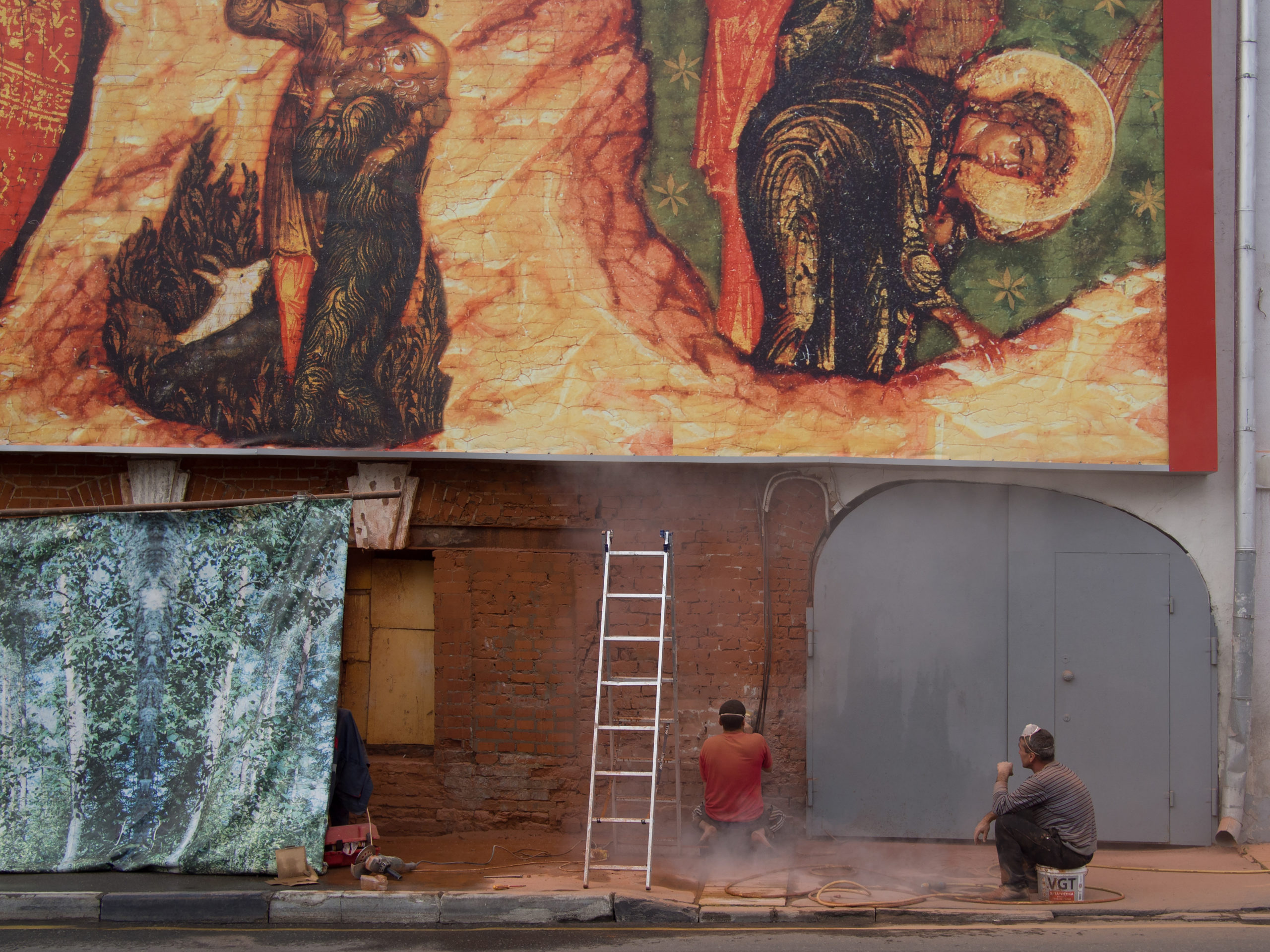
The most Western city in Russia has long been considered St. Petersburg, ever since its founding 300 years ago. Architecturally, this is still the case, but as far as everything else is concerned, for the last five years Russia’s most Western city has been Moscow. Football fans who came for the World Cup were amazed by how little the capital of Putin’s Russia resembles the classic image of the authoritarian city, with its bright red portraits of leaders and slogans against a backdrop of drab, lifeless gray streets, and a crowd of badly dressed, frightened people.
Modern authoritarianism is a far cry from its earlier incarnations: just look at contemporary Shanghai, Singapore, Hong Kong and Abu Dhabi. The most sophisticated and well-traveled visitors were surprised that many new city services and technologies work better in Moscow than in their own cities in more developed parts of the world. This is a well-documented characteristic of developmental catch-up: the party trying to catch up makes use of all the latest developments, and unexpectedly finds itself in the lead. Moscow changes quickly, and anyone who was here five or 10 years ago and talks about the city with any authority cannot help but be mistaken.
The great paradox of these changes is that Moscow’s external appearance and way of life are moving steadily closer to those in the West at precisely the same time as Russia and the West are moving with equal speed apart from one another in terms of their foreign policy, while Russian state media is full of anti-Western rhetoric.
The second peculiar Moscow paradox is that a notable proportion of independent-minded, pro-Western intellectuals—opponents of the Kremlin—reject those same changes that are making the city more Western. And since Russians love to generalize, people moving in these circles could be forgiven for thinking that the entire city hates both their Siberia-born mayor and the urbanists from trendy design bureaus responsible for the city’s transformation. How did this happen?
Before and After
Just a few years ago, Moscow—like all of Russia—was a bizarre combination of the hallmarks of socialism (the legacy of the Soviet Union) and of wild capitalism (the traces left by the country’s rapid and chaotic transition to a market economy). In Soviet times, owning a car was a rare luxury. At the beginning of the 2000s, foreign cars—at first second-hand, and later new ones—became available to millions of people, car dealerships opened by the hundreds, and banks blithely gave out thousands of loans for cars every day. Since the beginning of the 1990s, the number of cars in Moscow has grown five-fold, from 900,000 to nearly five million. Yet parking downtown remained free, as it had been under the Communists, fines for traffic violations were inconsequential, and parking on the sidewalk incurred no fine at all: back in the times of half-empty streets, it had never occurred to anyone that someone might mount the sidewalk and park there.
Two new ring roads were built in the capital, while public transport remained for many years as it had been at the moment when the Soviet empire collapsed. Millions of Muscovites scorned the public transport system: for the newly emerged middle class, not to mention the rich, the metro and buses were the preserve of flunkies, while the car was the main prestigious consumer item that should accordingly be used to go anywhere—even to the store around the corner.

Unbridled capitalism added unregulated trade and advertising to Moscow’s appearance. New habits quickly begin to seem like ancient traditions, and 10 years after the start of the car ownership boom, it seemed like Muscovites had always driven to work, to restaurants and to the store—only now, for some reason, there was not enough room on the roads or to park.
By 2010, Moscow was a megalopolis developing dynamically and haphazardly. It was eternally gridlocked (it had the longest traffic jams in the world back then), and on most streets it was common to see cars parked on the sidewalks and along the road, in not just one but two or even three lanes. Garish advertising banners were suspended over the roads, and building facades and roofs were covered with signs and advertising boards. Part of the space left over for pedestrians was occupied by kiosks selling everything from cigarettes and alcohol (until a 2013 ban on selling them at kiosks) to food items and toys.
Around metro stations, where once there had been squares, entire trade centers sprang up, cobbled together roughly from pieces of metal. Ordinary people weren’t far behind the traders: motoring converts erected DIY metal mini garages known as “shells” for their cars on any unoccupied patch of land in building courtyards, including on the grass, competing with each other in the urban land grab.
If you want the middle class to get on a tram, the tram should look like an iPhone.
Reigning over this megalopolis—a chaotic but infinitely more lively and wealthy Moscow than that of Soviet times—from 1992 was mayor Yury Luzhkov and his wife Elena Baturina, the embodiment of a conflict of interest: she was the richest woman in Russia and Moscow’s main city developer. Their rule lasted until President Dmitry Medvedev suddenly fired the political heavyweight that was Luzhkov, citing the unusually harsh (by the standards of the Russian authorities) reason that the mayor had “lost his trust.” The biggest city in Europe, with a population of 12 million inside its beltway and another 5 million in its satellite towns, could no longer develop uncontrollably.
To make people get out of their cars and move around this enormous city on foot, it was essential to equalize the rights and dignity of drivers and those using public transport. Pedestrians and bus passengers should no longer feel like second-class citizens.
First-world cities have equality between drivers and pedestrians, with certain privileges for the latter, since they are defenseless. The first world protects its most vulnerable, while the third world gives precedence to the strong. In a city in which cars have no privileges, a person with money is not master.
Just listing everything that has appeared in Moscow in the last five years could easily take up the rest of this piece. So to stick to the most important ones: parking on the sidewalk has finally become an offense; parking in the city center and in other popular locations is no longer free; and a highly advanced payment system is in use, operated not by coins, but by text message and smartphone apps.
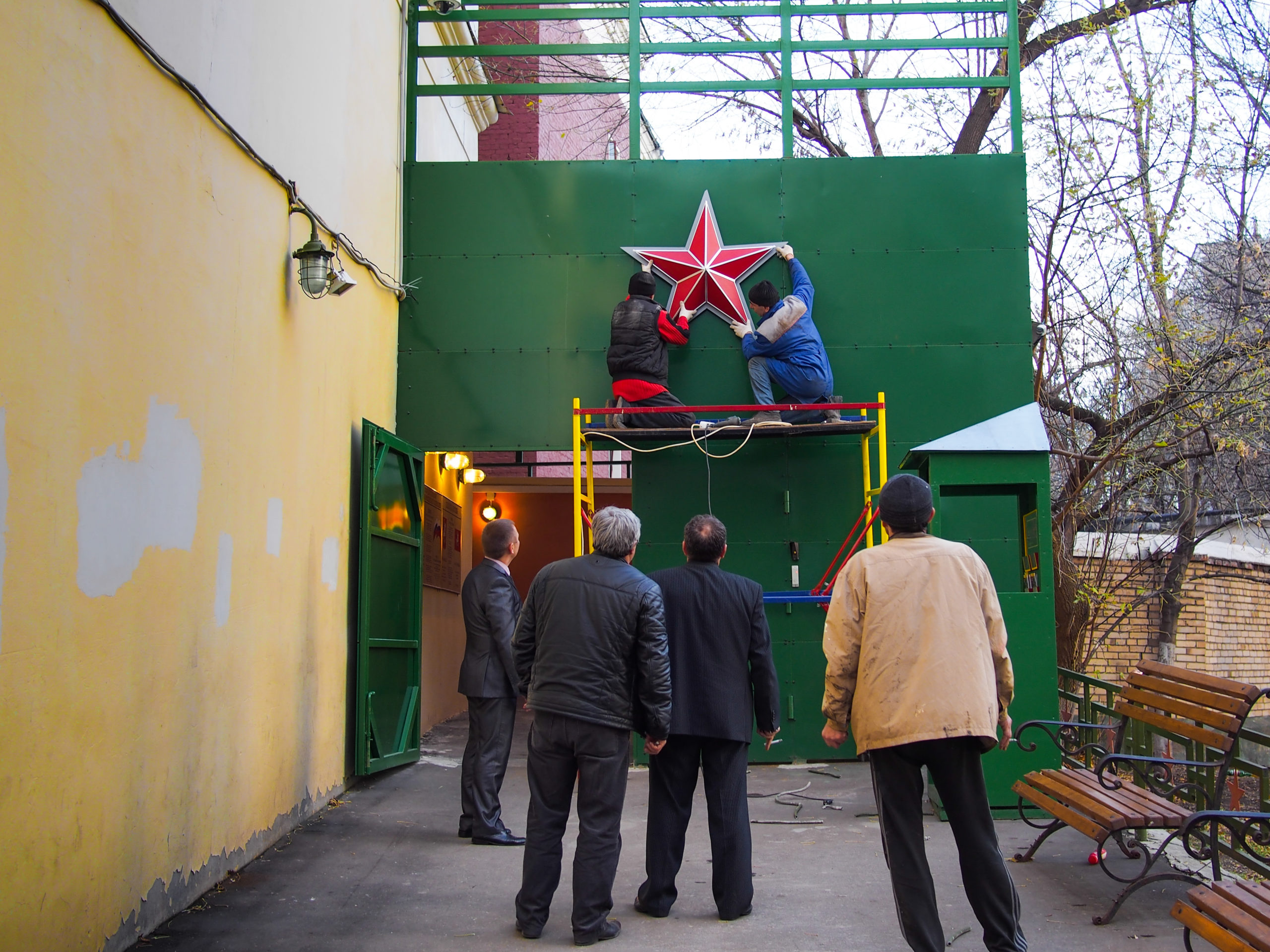
The sidewalks on dozens of central streets have been broadened, and paved with concrete and granite. Building facades have been restored, the ads hanging across the streets have been taken down, and cables have been moved underground. On the capital’s main streets—Tverskaya Ulitsa, the Garden Ring and several others—trees have once again been planted, the previous ones having been ripped up in the ’90s to make space for cars.
Regulations have been introduced for signage: multicolored boards no longer cover building fronts, and the signs on most stores and cafes are composed of individual letters, each one of which is fixed firmly to the wall, leaving most of the facade visible. Many streets and squares could previously only be crossed using underground passages that required going up and down stairs; now ground level crossings have been added. There are far more pedestrian crossings overall, and it’s now rare to have to go farther than a few dozen meters to the nearest one. Car-sharing, bike-sharing and electric scooter-sharing schemes are in place, and the ramshackle garages and “shells” have been removed from city courtyards.
The middle class has begun to swap cars for public transport and to move around the city on foot. Both the appearance of people on the streets and the previous habit of jumping in the car and going straight home from work have changed. The space for pedestrians in the redeveloped part of the city has increased by 15 percent since 2014, and the number of pedestrians has grown by 23 percent.
To meet the requirements of the middle class strolling along the expanded sidewalks (and not only the middle class, of course), the number of affordable stores, cafes and restaurants has increased (by 58 percent, if measured in square meters): establishments that people make a special trip to by Mercedes are one thing, places that people duck into during a downtown walk are quite another. They’re now found far more frequently along the streets: behind almost every other door, reflecting the pace of walk. The new, broader sidewalks are more conducive to outdoor terraces, and in summer, Moscow streets take on a distinctly Mediterranean air. The transformation of the streets was a truly international project, worked on by architectural bureaus from dozens of mainly Western countries, from the prominent Moscow design bureau Strelka to studios from the Netherlands, Switzerland, the UK, Germany, Scandinavia and the US.
If you want the middle class to get on a tram, the tram should look like an iPhone. This seems to be the thinking behind what has been done to public transport. The city has traded in its old trams and buses for new ones with air conditioning, USB ports and disabled access. Buses now have their own lanes, enabling them to bypass traffic jams (not always successfully, of course). The metro, in the meantime, now has several different new trains alongside its old rattling ones, just to add to its existing points of pride, such as the fact that there are less than two minutes between trains at rush hour. Dozens of new stations have opened, as well as a new circular overground line that links the radials with a second ring, the first ring line having been built in the ’40s and ’50s. A third ring is under construction. The same Troika card can be used for all city transport, from bikes to the metro, and, in addition to the plastic card format, is available as a keyring, bracelet or phone app. The need to buy separate tickets for different kinds of city transport had been an obstacle to use by Muscovites, who are eternally in a rush. Other apps show what time buses and trams will arrive.
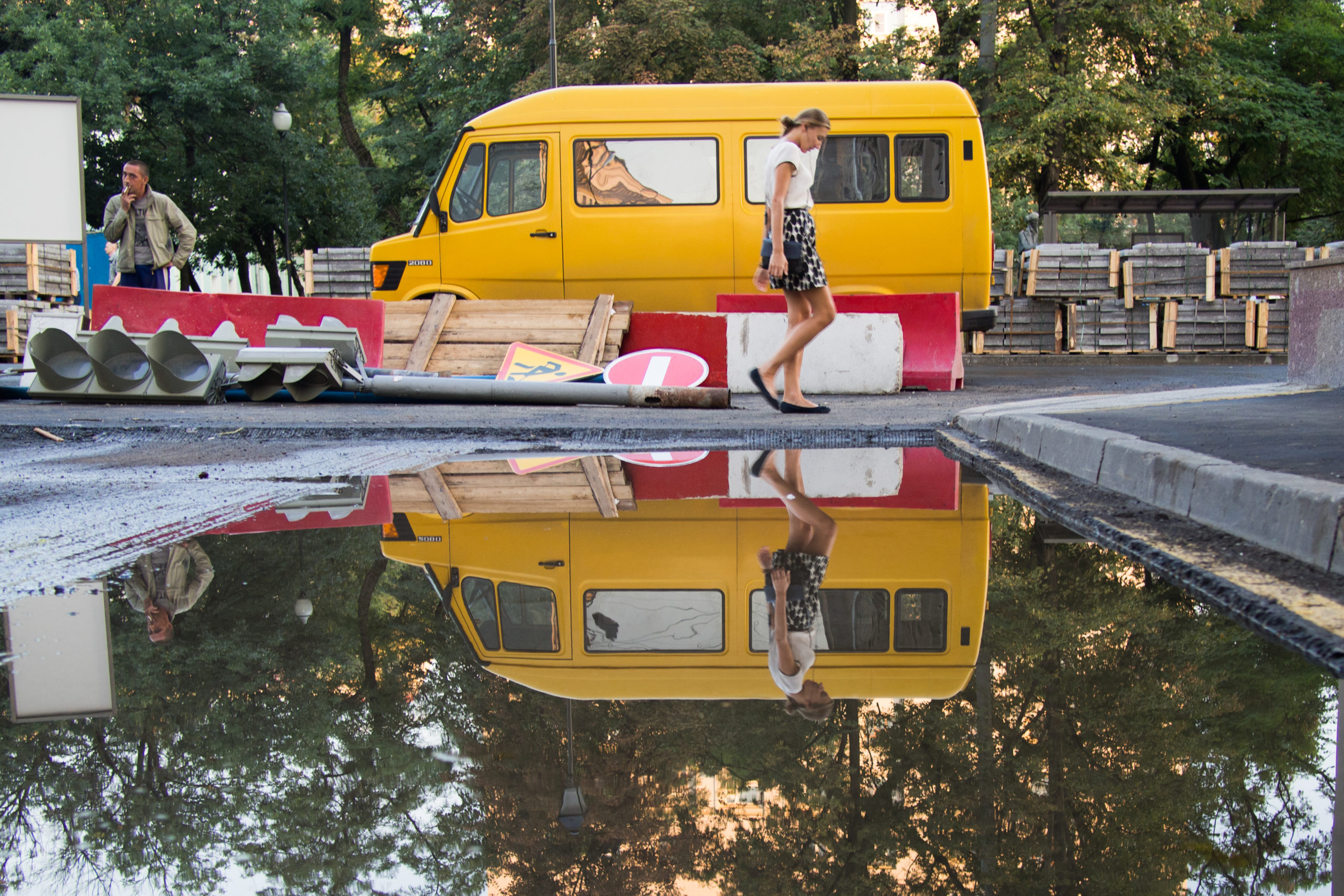
In the former capital of the Communist bloc, there is frequently less socialism than in many old capitalist capitals: there is no influential union for taxi drivers or limit on the number of taxi licenses, and Uber operates unhindered, alongside its Russian equivalent Yandex.: Taxis that are cheap by Western standards arrive almost instantaneously at any time of day or night, to any location.
Moscow mayor Sergei Sobyanin, who replaced Yuri Luzhkov first as acting mayor and was subsequently officially elected in 2013, looks nothing like a young visionary with fire in his eyes. The man who, together with a team of deputies and department heads, is moving Moscow closer to the West, is not the most practiced public speaker, nor the most ardent Westernizer. Outwardly, he differs little from the average Russian bureaucrat, and is more of a competent functionary and administrator. His time in charge of Siberia’s Tyumen region, which is relatively rich due to its oil deposits, was successful, as was his tenure in Putin’s administration (more of a managerial role than a political one).
When he was all of a sudden sent forth from the Kremlin to take over the duties of Moscow mayor from the ousted Luzhkov, he did not have a clear plan. He did have one clear task: do something about Moscow’s traffic jams, because everything was heading toward a total transport collapse, when one fine day, most likely in winter, Muscovites would end up ditching their Mercedes, Citroens and Toyotas in the middle of the road and setting off home on foot. Sobyanin was good at listening to professional advisors, and one overarching idea took shape during the city’s reforms: that Moscow competes for people not with provincial Russian cities, or even, as traditionally, with St. Petersburg, but with London, Berlin and Paris. So it is with those European capitals that it should be compared.
From Political Protest to Apolitical Sidewalks
The new mayoral team might not have had a plan in place, but it did have a successful experiment in its line of sight, as well as fairly loudly declared public demands, the roots of which lay in the mass political protests that took place in Moscow in the winter of 2011–2012.
The protests were not just against widespread allegations of fraud in the recent Duma elections and the poorly explained return of Putin to the presidency for a third term. As well as political demands and indignation over Putin complacently announcing he would be returning, the winter protests were notable for the outrage over the discomfort and humiliation that people endured in their dealings with the state (electoral fraud was only the tip of the iceberg), and the poor quality of the surrounding reality. None of this corresponded to people’s improved opinions of themselves.
By that time, the recently formed urban middle class was living in two parallel worlds: the corporate world or private sector in which they worked and obtained services, and the world of the state, which lagged far, far behind. In company offices, banks, malls, car dealerships and gyms, people could feel like citizens of a modern and relatively developed country. But every interaction with the state, from paying business taxes to obtaining a driver’s license, was unpleasant and even demeaning, while the urban environment around them clearly did not correspond to what Muscovites were seeing during their increasingly frequent trips to Western Europe and the US (with whom they were used to comparing themselves).
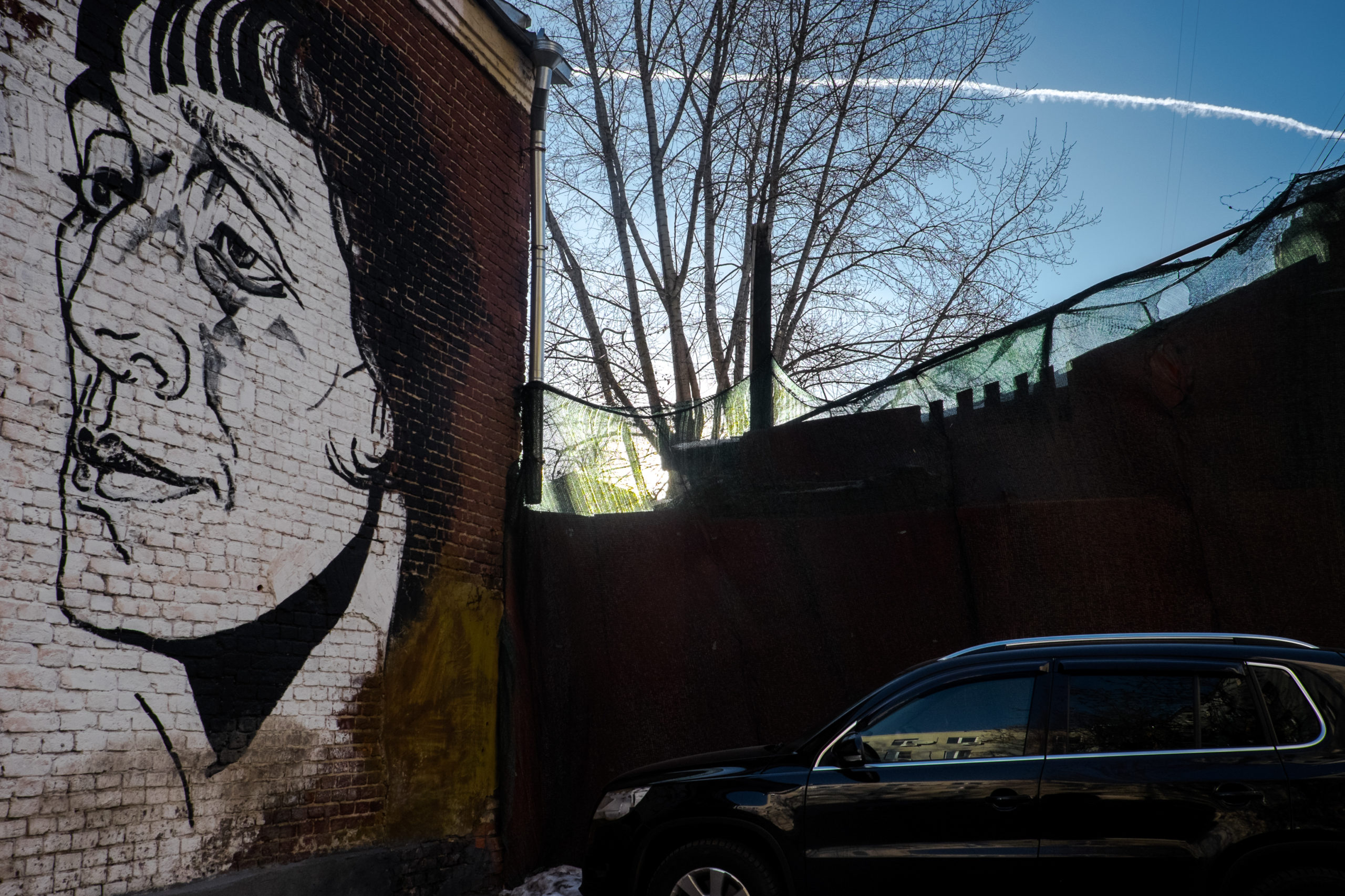
The authorities’ response to the protests was more complicated than it is customary to think. Individual activists were subjected to repressive measures, but in the Kremlin, it was decided to meet the demands for a more comfortable state and city. Revolutions—even velvet and colored ones—are most often made in the capital: this is both worldwide experience and Russian tradition. If there was no chance of introducing more Western policies at the demand of Muscovites, then it was certainly possible to provide them with a more Western urban environment and a less unpleasant relationship with the state.
Just a couple of years after the winter protests of 2011–2012, the state had transitioned to electronic, “corruption-free” document processing in service centers that were clean and resembled banks. And in Moscow, the grand-scale program of transforming the urban environment got underway. At first, a political concession was made: in order to legitimize the election of an outsider as Moscow mayor—a man from Siberia and from the Kremlin, Sergei Sobyanin—the Kremlin allowed one of the protest leaders, Alexei Navalny, to run in the mayoral election. After Navalny went on to win an unexpected 27 percent of the vote, compared with Sobyanin’s 51 percent, it was decided not to repeat the experiment for the time being.
Sobyanin’s re-election in 2018 was a routine procedure, there being no real challengers. But in several regions of Russia—including the main city of the Far East, the “Russian San Francisco” Vladivostok — even routine elections turned into a vote of no confidence in the Kremlin, with the authorities’ candidate being defeated. This did not happen in Moscow.
Redesigning Moscow
The first conversations about public spaces, bike racks, city food festivals and a new urban design began not long before the protests broke out in the winter of 2011. The centers of discussion were Afisha magazine (a Russian equivalent of Time Out, whose first director and co-investor was the American Andrew Paulson); the more left-leaning, “anti-gloss” subdivision of Afisha, Bolshoi Gorod magazine; the independent TV channel Dozhd; and the Strelka Institute of Media, Architecture and Design, founded by the former editor of Afisha, the influential intellectual Ilya Oskolkov-Tsentsiper, and the prominent businessman Alexander Mamut.
Dozhd and Bolshoi Gorod actively and sympathetically covered the 2011–12 protests, while the Strelka Institute became one of the key players in Moscow’s transformation. But back then, when the first conversations about a new city environment were being held, it seemed like a distant prospect, and that if anything was achieved, it would be small, separate projects, enclaves of modernity. No one expected that it could all happen so quickly.
In addition to the demands for a transformed urban environment, the mayor’s office had witnessed a successful experiment. Before the winter protests, back in the spring of 2011, the mayor’s office had appointed Sergei Kapkov the director of Moscow’s historic Gorky Park, famed for Michael Apted’s 1983 film of the same name. Kapkov is an associate of billionaire Roman Abramovich, whom Putin asked to do a stint as the governor of Chukotka, the most northeastern region of Russia, opposite Alaska. Kapkov helped Abramovich to redevelop the region’s capital city, Anadyr.
In the space of a few short months, Gorky Park underwent a radical transformation. Out went the cheap Chinese carousels, alcohol and beer and kebab kiosks. In their place appeared an open-air movie theater, Wi-Fi, children’s playgrounds and small kiosks made out of eco-friendly materials with a contemporary design, selling coffee and street food. A little later, a modern art museum opened in the park. The park became open around the clock, and free of charge to visit.
Many city residents criticized the makeover, arguing that a park without fairground rides and alcohol was elite and that no one would go there. But statistics showed precisely the opposite: the park was more popular than ever before, and Kapkov was appointed Moscow’s culture minister. Soon several other parks were given Gorky Park-style makeovers. Kapkov modernised city libraries, and, with his involvement, the Gogol Center contemporary theater appeared in 2012, headed by Kirill Serebrennikov (who is currently facing charges of embezzlement, though most of the Moscow intelligentsia believes, apparently quite justly, that the case is ideological and designed to serve as an example to others).
Kapkov was one of a few officials who were genuinely popular among educated Muscovites with skeptical attitudes to the authorities. Gorky Park remains wildly popular to this day, though Kapkov is no longer a city government minister: in 2013, Sobyanin relieved him of his post, possibly suspecting him of having mayoral ambitions. The mayor himself has continued and expanded Kapkov’s program, enlarging its scale and adding many new elements. What began as a local experiment has unexpectedly spread to the entire city.
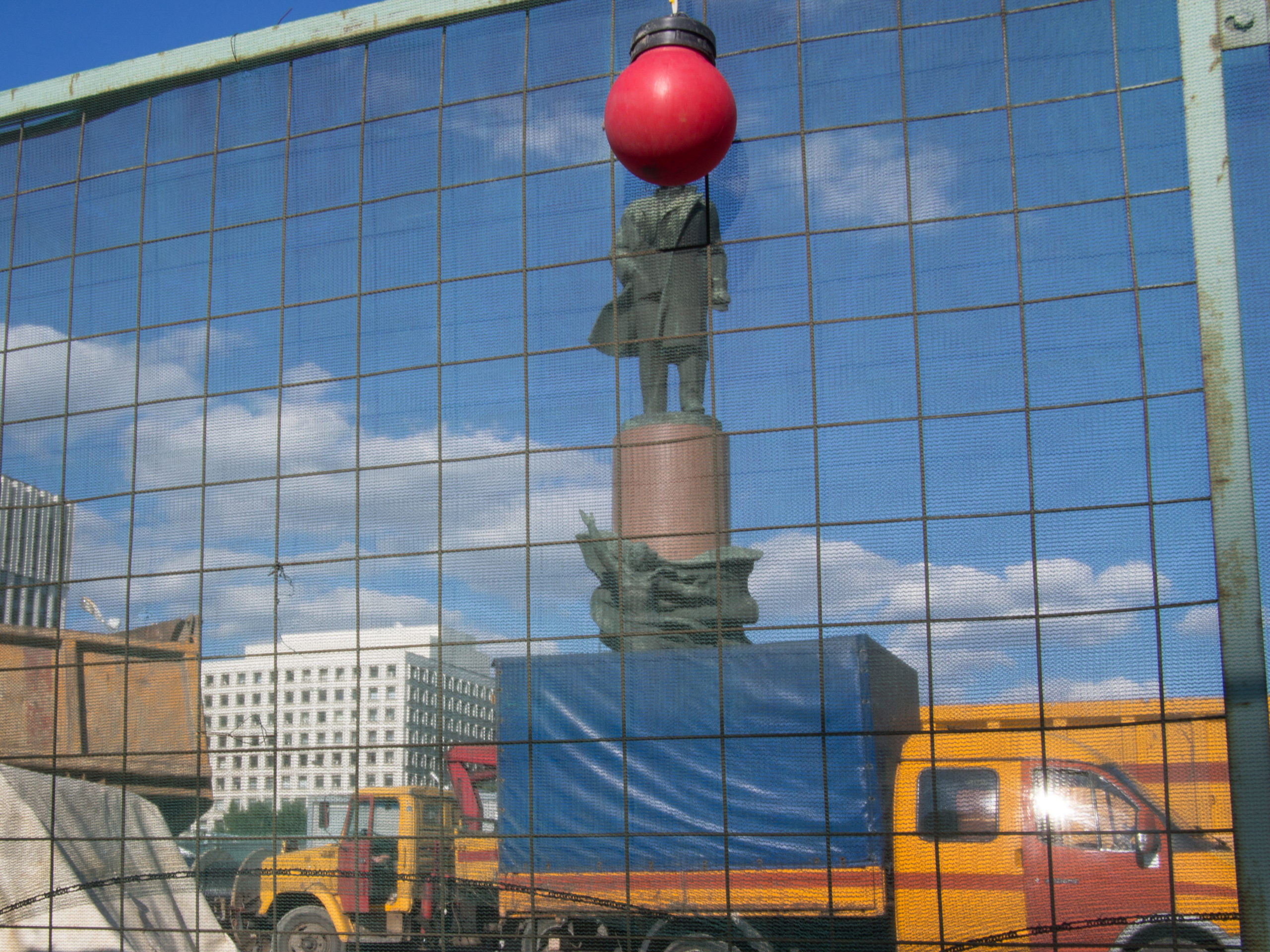
The mass reconstruction of central streets went on for three years in a row, from 2015 to 2017. This meant that in places where people were used to driving or walking, there were suddenly fences, trenches, workmen’s cabins, piles of construction materials, noise, dust and clanking. Although the work was going on in different parts of the downtown each year, moving around Moscow during that time was no more pleasant than living in an apartment that was being remodeled from scratch.
In some places, the work damaged the storm drainage system, and when summer thunderstorms struck the city, the streets flooded. This annoyed people, as did having to change their habits: driving into the center by car after the renovation work became expensive, as it was no longer possible to dump the car just anywhere for free. Third-world transport—minibuses that were privately operated, not necessarily very safe and would only accept cash payment—were replaced by official municipal transport, and that also took some getting used to.
The most controversial measure proved to be the demolition of city kiosks that in the first years of post-Soviet capitalism had sprung up in any available space. Most of them were later legalized, while some joined up with others and eventually grew into rather sizeable one- and two-story retail centers in the most unexpected places. Owners were offered compensation, but regardless of whether or not they accepted it, most of the kiosks were demolished in 2016. The nature of the kiosk cleanup—hundreds were demolished at the same time overnight or early in the morning by excavators and bulldozers—looked sinister and was reminiscent of the arbitrary nature of the Soviet authorities. And to add to that, mayor Sobyanin’s unfortunate comment that the kiosk owners had been hiding behind ownership documents that they had obtained who knows how scared people with its apparently careless attitude to private property rights—even though some documents were drawn up in times when the unauthorized seizing of municipal land was practically the norm, and was easily legitimized via a bribe.
Soon the mayor frightened Muscovites once again, forcing them to fear for their property and feel their own powerlessness. In spring 2017, the Moscow authorities lobbied for a bill on the mass demolition of mass-produced five-story pre-fabricated and brick residential buildings that were built by the thousands in the ’60s and ’70s, and the removal of residents to new buildings. Unlike New York, for example, Moscow is a city of home-owners, not rental tenants: in the transition to capitalism in the early ’90s, everyone was permitted to privatize—free of charge—the apartments in which they were living at the time as tenants of the state.
This city renewal program made Muscovites, especially those living downtown, worry that they were being deprived of their property for the sake of developers connected to the city authorities, and that they would be moved to buildings in worse locations. In addition, many people had invested serious amounts of money remodeling their apartments. In May 2017, people took to the streets to protest against the demolition project, and criticism grew bigger and bigger on social networks. The situation cooled down when the bill was rewritten to limit the authorities’ rights and increase residents’ rights, exclude all the central districts from the program, and give the remaining residents the chance to vote (buildings in which the majority of residents refused the offer of a different apartment were excluded from the program).
The program was not scrapped altogether, however. If it is implemented, tens of thousands of people will be moved out of their homes, and the appearance of Moscow beyond the city center will change significantly. How exactly is not yet clear. For now, it seems that architects have not come up with anything better in terms of mass housing than standardized multi-entrance panel buildings, 16–20 stories tall. If this is the case, then the architectural appearance of Moscow’s residential districts will change, but it will not be a breakthrough into the future. The residents of five-story buildings will simply move to more comfortable, yet similarly standard, 20-story buildings.
As far as legal rights are concerned, right now, in the northwest of Moscow, a standoff is taking place between residents who don’t want to move out of their old, five-story buildings into new multi-story ones, and a developer that has received permission from the mayor’s office to demolish the old buildings and build new ones, and has had that permission upheld by a court.
A Divisive Facelift
Russia’s peculiarity is the low level of institutional trust: far lower than in the West or in Asia. In other words, Russians find it difficult to believe that the authorities would do anything for them, rather than for themselves. This is linked not so much to the fact that the Russian authorities are not democratic as to corruption, and the fact that in the 20th century, each political regime strongly denounced the previous one. As soon as the first new paving stones were put down and new street lights put up in Moscow, people began to say that the paving stone factories were owned by the wife, daughter, relatives or friends of the new mayor, that it had all been dreamt up to steal and embezzle state funds. While investigative journalists uncover opacity in some mayoral state orders from time to time, relatives or even friends with a direct interest—a common phenomenon under the previous city authorities—have not been identified. And obviously there are more simple and less noticeable ways to steal state funds than by digging up all the central streets in the capital city for three years in a row for all to see, literally under the windows of the offices of Putin, the Federal Security Service (FSB) and tax police.
As for the question of why the changes were not carried out more gradually—by reconstructing one or two streets per year, rather than dozens at the same time—there is a simple answer. Firstly, that would have dragged out the work in the city center for decades. Secondly, one, two or even three pedestrian-friendly streets are exceptions; they don’t change the rules of life in the city. When the entire downtown changes all at once, the rules of living inevitably change for pedestrians, motorists and traders.
After three years of torment, Moscow is far more similar to the developed cities of Western Europe and North America. This is not that surprising, given that the designs for many streets were done by European and American design bureaus, and that the copying and pasting of global design and technology is Russia’s habitual method of catching up with the West. There is still a lot of disorder: trash is not sorted for recycling, apartment residents can knock a hole in the wall and put up an air conditioning unit anywhere on the building’s facade, change the window frames, enclose balconies, and change the door. The facades and other walls of Moscow buildings still have a far more variegated appearance, resembling scenes in Asia rather than in Paris or Berlin. But compared with just a few years ago, this is the advent of Europe that people cannot fail to notice.
People do notice it, but not everyone is glad. What’s most surprising is that a large part of the pro-Western intelligentsia, which dreams of Russia becoming a European country, has vehemently rejected the Westernisation of Moscow, despite having welcomed its beginnings when Kapkov transformed Gorky Park and the surrounding area. In their rejection, they have no qualms about supporting even snobbish, xenophobic rhetoric based around the fact that the mayor is not himself a born-and-bred Muscovite, but came to the capital from faraway Siberia, and that he is partly descended from one of the native Siberian peoples. The most catty critics on social networks call him a reindeer herder, joke unkindly that he broadened the sidewalks to make it more convenient to graze reindeer on them and advise him to go back home to his native tundra. Even many of those who are unhappy with Moscow’s Western-style facelift are pretty astounded to hear this sort of thing not only from taxi-drivers and the former owners of demolished kiosks, but from liberal and progressive intellectuals too.
The critics themselves insist that their reasons for resisting the changes are humanitarian and aesthetic. For a start, no one consulted them, and you should never do anyone any good without asking their permission. Placing limitations on cars in the center has supposedly hit ill and elderly people. In reality, this is not true: in the Soviet Union, there were few private cars, that’s why most motorists were young or middle-aged, while elderly people used public transport and taxis.
Secondly, the detractors say, it’s wrong to spend so much money in the capital when the Russian provinces are so poor. It could be countered that the provinces are not uniformly poor, that Moscow spends money from its budget surplus, and that every eighth Russian lives in Moscow. Improving life for 12–15 percent of Russians is a legitimate task. Moscow has always spent a lot more on itself than the provinces do, but before this spending was less noticeable, and did not produce such a modernizing effect. Now many cities are adopting Moscow’s approach to modernize their urban environments.
They denied us our political rights, so we won’t take what they’re offering now: we can’t be bought off with sidewalks.
Aesthetic objections go along the lines that Moscow’s new ostentatious and manicured appearance offends refined tastes. In the granite paving, dissenters see the return of Stalin-era aesthetics. Critically minded pro-Western intellectuals have even started saying that Moscow has always been a semi-Asian city, that chaos, garishness and disorder are its soul and fate, that the transformation of the urban environment in a Western spirit does not suit the Russian capital.
Certainly, some street decorations—such as the plastic cherry blossom trees last spring—are not the epitome of refined taste. But seasonal decorations are temporary, while the transformation of pedestrian space and transport is permanent. In any case, taste is too personal a matter to focus on it. Sometimes granite beneath the feet is not Stalinism, but simply an attractive and durable type of stone.
The reason for the paradox is simple. The pro-Western intellectuals cannot accept a Westernization of Moscow that was initiated not by them, but by a representative of the current political regime. They traditionally saw themselves as enlighteners, as the vanguard of the Western way of life, and believed it was they who should bring Europe to their native soil: this was their destiny and historic mission. And when Europe is being recreated in Moscow without them—what’s more, by their political and ideological adversaries—they do not recognize this Europe, refuse to see the similarity, and consider it to be all form, no content.
They had imagined that the Europeanization of urban life would have to come together with Western institutions, hard-fought elections and full freedom of speech. And here it is arriving separately, and the population is soaking up knowledge of modern city living quite separately from the experience of democracy. The Russian Westernizer-intellectuals had hoped that it would be them who made a European bourgeoisie out of Russians, and that the new bourgeoisie would in exchange learn the right values. Now that desired link has been destroyed.
Furthermore, the Europeanization of Moscow without the democratization of the regime destroys the habitual picture of the world. Before, everything was logical: here was authoritarianism, chaos, poverty, disorder, corruption and inconvenience, while over there in Europe was order, convenience, good service, better food, pleasant streets, clean transport, paid parking and together with all that—the reason for all that—was democracy, freedom of speech and an impartial justice system. Comfortable, democratic Europe on the one hand, and shackled, uncomfortable Moscow on the other.
The question is, what should be done now? Moscow has stopped differing from the capitals of Western democracies in terms of comfort in every aspect other than its long, snowy winter, during which life doesn’t stop: stores, theaters and cafes are open, and transport runs as usual, even during long periods of snowfall and in temperatures of minus 20 degrees Celsius. The world to which we are accustomed is crumbling.
Some accept the changes identical to those introduced in Europe, while others reject them out of pride: since we haven’t been given freedom of assembly or the press, then we don’t need the other things, the argument goes. They denied us our political rights, so we won’t take what they’re offering now: we can’t be bought off with sidewalks.
Some even openly say that a more pleasant city lowers the potential for protest, and reconciles people to the regime. After all, the worse the surroundings, the greater the probability of people being unhappy and starting to protest.
This new urban comfort is, however, partly the result of that very protest, that constant discontent, the comparisons between what it’s like here and there—in normal countries. Furthermore, the concept of the intelligentsia on one side and the city authorities on the other is flawed: the majority of those whom it is customary to describe as liberals or pro-Western intellectuals support the changes to Moscow, or are even taking part in them. Those changes are being brought about not by the efforts of bureaucrats, but by contemporary designers, architects and managers.
This is the long-standing argument over authoritarian modernization in Russia, over whether it is possible to improve life without improving political institutions. Russia has hardly ever been as free as the model Western democracies. But does that mean that Russians should live by the principle of all or nothing: to wait for the onset of freedom before allowing themselves any comfort? Or should they hope that comfort and fun and a diverse city life will be the soil from which freedom will grow? After all, someone who is used to comfort is more demanding, and expects more respect. Ultimately, the renowned European level of comfort and order have also developed in countries that are not shining examples of democracy, and, in many countries, appeared before freedom.
Contributor
Alexander Baunov is a senior fellow at the Carnegie Moscow Center and editor in chief of Carnegie.ru. He is a former reporter for Russian Newsweek, and an editor and writer on modern Russia and Russian foreign policy.




